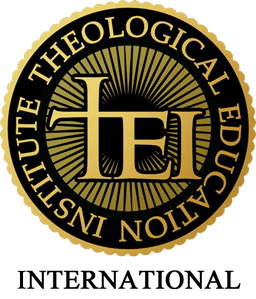Notes on the Sociology of Religion (15)
John C. Rankin
Otto, Rudolf, The Idea of the Holy (London, Oxford University Press, 1923, 1950).
_________________
- Background: a) 1869-1937, German Lutheran scholar of religion and philosophy; Ph.D. Giessen, taught at Marburg’s Divinity School; b) aryan spirit, and dissemination into Hindu and Buddhist ideas, and hence affinity; anti-semitic as being primitive; also contributed to anti-Islamic bent; c) 1907: Naturalism and Religion; 1923: Das Heilige = most important and influential work and still in print; India’s Religion of Grace and Christianity Compared and Contrasted; d) John Harvey (translator): Three dangers in the study of religion − 1. mysticism: does not see the forest for the trees (“unduly subjectivist”), i] “Otto’s emphasis is always upon the objective reference, and upon subjective feelings only as the indispensable clues to this” (p. xvii), 2. (phenomenology) describes the tree without regarding its sources that sustains its exietence, 3. humanizing the concept of the divine, thus breaking the immanent from the transcendent, rational and moral natures of God, i] Otto: true contrast is between the rational and the non-rational, ii] “If one subjects everything to reason our religion will lose its mystery and its supernatural character. If one offends the principles of reason our religion will be absurd and ridiculous …There are two equally dangerous extremes, to shut reason out and let nothing else in” (p. xix); e) Eliade: sacred as it applies to space and time via theophany; Otto: interest in the theophany itself – bush (Moses) and temple (Solomon) secondary – goal is the experience of the mysterium tremendum.
- Balance of the Rational and Non-Rational: a) “Christianity not only possesses such conceptions, but possesses them in unique clarity and abundance” (p. 1) − 1. belief and feeling, 2. not rationality alone; not non-rationality alone, 3. “All depends on this: in our idea of God is the non-rational overborne, even perhaps wholly excluded, by the rational? Or conversely, does the non-rational itself preponderate over the rational? (p. 3; seeking a balanced response to the overly rational).
- Numen and the Numinous: a) In speaking of the “holy” (qadosh, hagios, sanctus/sacer), chosen term is the Latin numen, and from there to coin the word “numinous” − a sui generis category of value, or state of mind; b perspective of the artist and musician relative to describing the numinous experience of “solemn worship” − 1. Schleiermacher’s specific use of the “feeling of dependence” (cf. Abraham in Genesis 18:27), 2. Otto’s chosen language of “creature-consciousness” or “creature-feeling” (p. 10); c) Mysterium Tremendum − 1. nature of the numinous: “…such that it grips or stirs the human mind with this and that determinative state … in sudden, strong ebullitions of personal piety … in the fixed and ordered solemnities of rites and liturgies, and again in the atmosphere that clings to old religious monuments and buildings, to temples and to churches” (p. 12), 2. descriptive terms and feelings: gentle tide, sudden eruption, spasms and convulsions, strangest excitements, transport, ecstasy, wild and demonic forms, grisly horror, shuddering, religious dread, daemonic dread, mythological apperception, ghostly (and fear thereof), tremor, fear, awefulness, mystical awe, overpoweringness, might, power, absolute overpoweringness, tremenda majestas (aweful majesty), self-depreciation, abyss, night, deserts, agony, barrenness, tedium, annihilation of personal identity, i] fear of Yahweh (Ex. 23:7; Job 13:21); OT wrath of God = arbitrary; jealously of Yahweh (pre-Mosaic Yahweh more so this way), 4. “cold blood” of natural fear v. “non-natural or supernatural … symptom of ‘creeping flesh’” (p. 16), 5. Mysterium tremendum can be summed up in three primary qualities: awefulness, majesty and the energy (or urgency) of the numinous i] energy or urgency described: vitality, passion, emotional temper, will, force, movement, excitement, activity, impetus, 6. Mysterium tremendum, in the religious sense, as the “wholly other,” i] Stupor before the extraordinary phenomenon of the “wholly other,” ii] This truly “mysterious” object “is beyond our apprehension and comprehension” (p. 28),iii] Void and emptiness of the Buddhist mystics, 7. Element of fascination – allures of a potent charm, i] “It may well be possible, it is even probable, that in the first stage of the development of religious consciousness started with only one of its poles – the ‘daunting’ aspect of the numinous – and so at first took shape only as ‘daemonic dread’ ” (p.32), ii] shamanism, experience of “possession,” “Dionysiac” element of transport, intoxicating hymns, rapture, Polynesian “mana,” – “living ‘something more’ of the fascinas” (p. 35), iv] central observation, and indeed, presupposition: “All this shows that above and beyond our rational being lies hidden the ultimate and highest part of our nature, which can find no satisfaction in the mere allaying of the needs of our sensuous, physical, or intellectual impulses and cravings. The mystics call this the basis or ground of the soul” (p. 36), iii] beyond, overabounding, exuberant, the mystical “moment,” bizarre, iv] Jonathan Edwards in transcending rational joy, v] Bodhi (opening of the “heavenly eye”); rapture of Nirvana (negation of a negation which leads to unspeakable bliss), vi] Greek term deinos as numinous – evil, potent, strange, queer and marvelous, horrifying and fascinating, divine and daemonic, source of energy, vii] German term das Ungeheure (monstrous); weird and uncanny, 8. need for analogy to help understand the mysterium tremendumm, the sublime, not from religion, but aesthetics, i] “Accordingly we see religious feeling in a permanent connexion with other feelings which are conjoined to it in accordance with this principle of association” (p. 45), ii]. the complex concept of the “holy,” iii] analogy of eros and music – “something more” in both, mystical effect of silence, 9. The holy as a category of value, i] synopsis statement thus far: “We have already met that strange and profound mental reaction to the numinous which we proposed to call ‘creature-feeling’ or creature-consciousness, with its concomitant feelings of submergence and prostration and of the diminution of the self into nothingness…” (p. 50), ii] “Self-disevaluation” of Isaiah and Peter, iii] moving up the evolutionary chain from mere experience of nothingness (where qadosh and sanctus were not moral categories originally); to marking it as a moral category in defining sin, and recognizing the need for atonement; specifically biblical language here arising from syncretistic, 10. means of expression of the numinous, i] direct means – feeling what is preached, sung, told, ii] indirect means – numinous feelings are evoked indirectly through the miraculous, portents, prodigies, marvels – that which is beyond the realm of rational phenomenology to understand, iii] means as expressed in art, architecture, mystical effect of vast spaces.
- Numinous in the OT: a) “detecting” after-effects from OT stories − 1. all the primitive dread and error elements, 2. Yahweh in Ex. 3:6 (hiding of face), 3. Isaiah’s vision (Isaiah 6), 4. jealousy of Yahweh, 5. Ezekiel’s vision, 6 Job 38 and revelation of Yahweh in the storm.
- Numinous in the NT: a) wholly other of the “kingdom”; b) “Hallowed” by thy name…; c) agony of Christ in Gethsemane; d) role of the pneuma in Paul + doctrine of election (freedom despite); e) numinous in John (wrath in John 3:36; Spirit in 4:24.
- Numinous in Luther: a) Instant rapport of Catholic piety and mysticism; b) Plato’s rationality, yet need for myth and enthusiasm; c) Aristotle’s thorough rationality and Stoic distancing of God from passion; d) Lactantius, in battling the philosophers: the incomprehensibility and tremendum of God; e) non-rational finds some place in Duns Scotus, and explodes in Luther, though later expunged by Lutheranism; f) Luther contra rationalism of Erasmus; “unrevealed” God, concept of “divine majesty,” God as he who “overbrims with pure goodness,” as “awe-inspiring”; g) God as terrible and more frightful than the devil: “It is the absolute numen, felt here partially in the aspect of maiestas and tremendum” (p. 99); h) assault of the “whore Reason”; i) God is exlex (outside the law); j) his battles with desperatio and Satan; k) experience with “religious awe” and the Holy Spirit in the heart; l) non-rational energy.
- Developmental process: a) summary statement thus far: “Thus permeation of the rational with the non-rational is to lead, then, to the deepening of our rational conception of God; it must not be the means of blurring or diminishing it” (p. 109); b) elevation of daemonic dread from “fear of the gods” to gear of God,” where dread becomes worship; c) and in a subsidiary capacity: “Almost everywhere we find the numinous attracting and appropriating meanings derived from social and individual ideals of obligation, justice, and goodness” (p. 110) − 1. the holy becomes the good, 2. “The greatest distinction of the religion of ancient Israel, at least from Amos onwards, is precisely the intimate coalescence of both elements” (p. 110), 3. the moralization of the idea of God.
- The holy as an a priori category: a) It is both rational and non-rational, yet against all sensationalism and naturalism – it is purely am a prior category; b) prior and deeper than all else – animae, bottom of the soul, i] Kant, ii] it cannot be explained, only presupposed – as the history of humanity begins with man who has to be presupposed; c) earliest manifestations of the a priori − 1. magic, 2. belief in and worship of the dead, 3. souls and spirits, 4. power and mana, 5. homage to natural objects (volcanoes, mountain peaks, moon, sun, clouds – all animated; the frightful or extraordinary, the noxious or advantageous; fetishism and totemism, worship of animal and plant), 6. fairy stories; myths, 7. daemonism and polydaemonism (e.g. Arabic concept of deities that are products of the religious consciousness), 8. clean and unclean – leading to awe; d) all these are pre-religion − 1. now, formal development of the numinous, 2. moving from the eerie, haunted and daemonic to a “named power” (p. 127), i] Jacob at Bethel, ii] nix idea of “primitive monotheism,” 3. power of the a priori: “Why should ‘savages,’ set in other respects in an utterly alien milieu of barbaric superstition, accept and, what is more, retain these notions, unless their own savage minds were so predisposed to them that, so far from being able to let them go, they were obliged to take at least an interest in them as a tradition and very frequently to acknowledge their authority by the felt witness of their own consciences” (p. 130), 4. early “crude” phases are transcended when “ ‘numen reveals itself’ (i.e. becomes manifest to mind and feeling),” 6. “We conclude, then, that not only the rational but also the non-rational elements of the complex category of ‘holiness’ are a priori elements and each in the same degree. Religion is not in vassalage to either morality or teleology, ethos or telos” (p. 136), i] histories of religions show the gradual interconnection of the ethical into the ritual, ii] Socrates and a priori knowledge, iii] Luther’s a priori assumptions, iv] Protestant missionary assumptions.
- Manifestations of the holy and the faculty of divination: a) one thing to have ideas of the holy, and another to know its operative phenomenological interventions − “Still, small voice” (re: Elijah fleeing Jezebel); b) the faculty of recognizing the holy, or numinous, labeled as that of “divination,” − 1. “Genuine divination, in short, has nothing whatsoever to do with natural law and the relation or lack of relation to it of something experienced. It is not concerned at all with the way in which such a phenomenon – be it event, person, or thing – came into existence, but with what it means, that is, with its significance as a ‘sign’ of the holy’” (p. 145), 2. more than mere intuitions, but inclusive of the same (more than Schleiermacher), not universal, but particular, 3. miracle, sign; inclusive of the rational, but also beyond; thus “not worked out in accordance with a clear intellectual scheme, but in conformity to obscure, dim principles which must be felt and cannot be stated as premises” (p. 148): per Kant, “not-unfolded” and “unexplicated concepts,” 4. again, “overpoweringness,” “daemonic,” “dreadful.”
- Divination in primitive Christianity: a) object of divination is “Christ Himself” + “holiness made manifest” (p. 155) − 1. focus not on himself, but on the kingdom, 2. more than what he teaches, in how Christ is experienced (Mk. 10:32 – numinous emanating from Christ), 3. presence of the Spirit and his supremacy over the daemonic world.
- Divination in Christianity today: a) missionaries and their experiences; b) how does today’s Christianity, having undergone evolution and become a “great religion,” still capture the essence of the first disciples? − 1. emphasis on redemption and proclamation of the kingdom, thus 2, experience of the numinous based accordingly – beyond and deeper than the explicit “task of theology” (p. 170); c) institutions and doctrines are fine, but do they yield the miracles of Christ (e.g., Mark 16:20)? But better than the language if “miracles,” is the of “the powers of the spirit” (p. 172); d) he cross and “the guiltless suffering of the righteous” in its non-rational elements (p. 173); d) value of religion not only in what is done for culture, but in the experience of its “innermost essence,” of the holy.
- Otto’s summation: a) the idea of the holy, the numinous, is an a priori reality − 1. prior to, and thus not derived from history and experience – the ground for them; b) need to distinguish between inner and outer, of general and special revelation − 1. The need to “presuppose a mind or spirit determinately qualified; to profess to give a history of religion is to presuppose a spirit specifically qualified for religion” (p. 176); c) discernible power for the numinous in art and music − 1. the nature of a “prophet,” 2. “Such a one is more than Prophet. He is the Son” (p. 178).
- Appendices on Chrysostom and the inconceivable in God; examples of the numinous in poetry, hymns and liturgy; spirit and soul as numinous entities rooted in primal awe; the supra-personal in the numinous (treatment of Yahweh and Elohim); mystical elements in Luther’s conceptions of faith; “signs following;” the power of silent worship; John Ruskin’s experience of awe, being along in the face of creation; in the English language (contrasted with the German); mysterium tremendum in Robertson and Watts; resurrection as a spiritual experience, deeper than claims to a physical.
- Critical perspectives: a) Otto seems engaged in an erudite pursuit away from the sterility of German and mathematical/engineering rationality as the essence of religion, reaching for something greater that ministers to his soul − 1. thus, a plethora of related and overlapping descriptive terms touched upon, 2. a relentless wrestling with God, yet always holding back from the full embrace of the personal in God, thus viewing himself as a Jacob at Bethel?; b) What were his own experiences with the numinous, and hence, the repeated grounding in the dreadful? − 1. not naming the a priori, e.g., the image of God, in its particularistic biblical form; yet he names the particularistic Son, but in a still distant fashion, 2. is the Numinous his ultimate named deity?; c) his concern is not for the origins of the numinous, cause and effect as it were, but for what it means. But how can meaning be separated from cause and effect?; d) for Otto, do what extent do aesthetics matter more than ethics?; e) how deeply is he striking at the whole history of religion school?
###
Ayoub, Mahmoud A., “The Numinous in the Qur’an: An Assessment of Rudolf Otto’s View of Islam” (The Muslim World, Vol. LXXXVII, No. 3-4, July-October, 1998, pp. 256-267).
- Otto’s disdain for Islam root d in deeper disdain for Semitic religion.
- Reaction to popular Sufi ecstatic dhikr devotional ceremonies: a) limited observation and made into caricature of all of Islam; b) free-will issue, in viewing Islam as more rigid in this regard.
- Contrast between biblical and Qur’anic Job: a) but neglects end of biblical book of Job re: restoration of fortunes + nature of what constitutes an answer from Yahweh in chapter 38;aAbsolute oneness of Allah/God as key; c) Muhammad’s mystical vision as reality of the numinous.
- “The significance of Otto’s ideas lies in their universal application to all religious phenomena” (p. 266) but “not that Islam is under-developed Judaism or Christianity; it is rather due to either Otto’s lack of understanding of Islam or his conscious prejudice against it” (p. 267).
###


